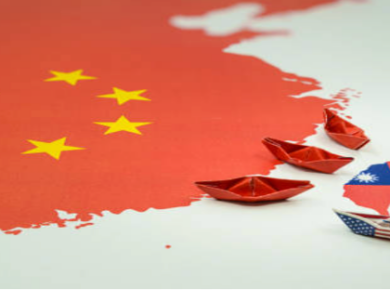Disclaimer: This blog post solely reflects the opinion of the authors and should not be taken to represent the general views of IPPR’s management/ editorial team or those of fellow authors.
(Bowen, 2021)
China and Iran signed a 25 year cooperation agreement on March 27th, outlining their respective commitments to improving relations with each other. The terms of the agreement mainly involve an exchange of resources, where China is to invest 400 billion in Iran’s economy over these 25 years, while Iran would steadily supply oil to China (Figueroa, 2021).
What does this agreement mean?
Theoretically, both parties would be able to reap great benefits from the agreement. For Iran, who has factor endowments in oil reserves, trading for greater injections into its economy could possibly lead to greater infrastructure or diversification of its products. Iranian authorities, in addition, also claim that one of the conditions also include reviving the Chinese One Belt One Road initiative (Anon, 2017). It seems that both states are focused on absolute gains, agreeing to empower each other since they are in different regions. This unique scenario would be unlikely to persist if both existed in the same region. Historically, the region is characterized more by conflict than unity, culminating in dynastic rivalries between leaders such as King Farouk and King Abdullah. China would be no different, as they would be susceptible to the same culture of mutual suspicion and rivalry.
In addition, Iran has also suffered the effects of the US’ maximum pressure campaign, where the sanctions it imposed on Iran severely weakened its economy. For this, China’s intervention became more important for the Islamic Republic, which was both isolated and economically weakened. It could also make the resumption of the Joint Comprehensive Plan Of Action more likely, as Iran can gain more leverage in this view (FT Editorial Board, 2021).
Why is it significant?
However, the implications of this agreement can be significant for China. Considering the US’ stranglehold in the Middle East through Israel, China seems to be lacking an auxiliary point in the Middle East to contend with the status quo. In the midst of this US-dominated region, China can therefore use Iran as a pivot to gain some influence in the Middle East (Kuo, 2021). However, China is not an innovator in its desire to expand to the Middle East. Its ally Russia also has similar stakes in the Middle East, characterized by their historically close relations with Iran. This raises serious implications of whether the world will see the formation of an axis between Russia, China, and Iran, where all three are capable of changing the regional landscape (FT Editorial). Greater relations with Iran become a stepping stone to achieve this eventual cross-regional alliance. Although this seems to be aggressive and not necessarily fitting in China’s rhetoric of peaceful development, the promises made in its speech can be broken. A trade for a greater spot in the status quo in exchange for its reputation becomes the result.
Nevertheless, China must get over the hurdle of balancing its interests with Iran against inevitably jeopardizing their relations with Saudi Arabia. Saudi Arabia may choose to block the trade of oil with China, if China backs its regional rival Iran too extensively. Furthermore, the block of trade could also occur if US-China relations worsen, where Saudi Arabia may prioritize its relations with the United States over China. This would significantly harm China’s ability to continue providing resources for the One Belt One Road Initiative (Service, 2021). Riyadh is a strong trading partner, where China imported 17 percent of its oil from Saudi Arabia in 2019 (Service, 2021). For China, it seems that a gradual policy to shift the US-leaning allies in the Middle East towards them is the objective. Establishing close ties by providing economic incentives for cooperation can portray China as a viable alternative, an appealing argument characterized by liberalism. Economic cooperation ultimately dictates the status quo from this perspective.
How do we know the commitments are cemented?
In the past, China has had relatively strong ties with Iran, where the new Islamic regime was recognized in 1979. Initially, China assisted the development of its military and later nuclear capabilities (Service, 2021). However, China had only gained traction after 1979, which was why back then it did not make strong commitments to Iran in its aim to thwart US influence in the region. At the time China was also susceptible to US pressures, as imports of Iranian oil were reduced as per the US’ demands.(Service, 2021). Ultimately, the current form of China seems to indicate that these commitments could very well be true. They are no longer susceptible to US pressure in this perspective.
Debunking myths
However, it is important that these claims are not seen one-dimensionally. Claims of investment as high as 400 billion have been traced to multiple poorly sourced articles in 2019, which means that analysis remains ill-informed (Figueroa, 2021). The head of the Iran Foreign Ministry, Reza Zabib, also formally claimed that the agreement was “non-binding”, nor were there quantitative specific contracts (Figuera, 2021). This indicates that the agreement at best describes ambitions by both sides, but these ambitions have not been planned. It signals that both states have intentions to cooperate and develop better relations, but this is susceptible to change. Historically, China pledged to increase investment in Iran by tenfold in 2016, however, there was little progress for this to show five years later (Figuera, 2021). This clearly demonstrates strong motives to refrain from overly empowering Iran, in fear that too much intervention could jeopardize relations with one of its strong trading partners in Riyadh.
It seems that the coverage of this agreement is characterized by overhype, and an overreaction by the West. Simply, it seems that the agreement requires a clear roadmap with quantitative commitments for analysts to conduct adequate analysis. For this, rather than claiming that China has intentions to challenge US influence in the Middle East, it is better to be conservative and not immediately conclude that the country has aggressive intentions. Until the full details of the agreement are released, we must not treat these implications as concrete, but as only speculations.
Bibliography
Figueroa, W., 2021. China-Iran Relations: The Myth of Massive Investment. – The Diplomat. Available at: https://thediplomat.com/2021/04/china-iran-relations-the-myth-of-massive-investment/.
Anon, 2017. Iran, China Team Up on New Silk Road Project. Financial Tribune. Available at: https://financialtribune.com/articles/domestic-economy/66450/iran-china-team-up-on-new silk-road-project.
Bowen, Jeremy., 2021. China sets sights on Middle East with Iran co-operation deal. BBC. Available at: https://www.bbc.com/news/world-middle-east-56574336
Kuo, M.A., 2021. China-Iran Strategic Cooperation: Symbolism Vs. Substance. – The Diplomat. Available at: https://thediplomat.com/2021/05/china-iran-strategic-cooperation-symbolism-vs-substance/. ;
Service, T.N., 2021. China-Iran pact lays bare their ambitions. Tribuneindia News Service. Available at: https://www.tribuneindia.com/news/comment/china-iran-pact-lays-bare-their-ambitions-24 8253.
FT Editorial Board, 2021. China’s high stakes engagement with Iran. Subscribe to read | Financial Times. Available at: https://www.ft.com/content/854e4636-6f38-40f0-8fdb-ce11d1be7bd4.
By Gabriel Chow
Gabriel is a first year BSc Politics and International Relations student at UCL. Particularly interested in Middle Eastern politics as well as how sustainable development can be best achieved in a turbulent era during the pandemic.






